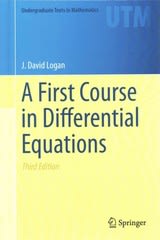Question
Let x be a random variable that represents the batting average of a professional baseball player. Let y be a random variable that represents the
Letxbe a random variable that represents the batting average of a professional baseball player. Letybe a random variable that represents the percentage of strikeouts of a professional baseball player. A random sample ofn= 6 professional baseball players gave the following information.
x0.326 0.278 0.340 0.248 0.367 0.269
y3.5 7.2 4.0 8.6 3.1 11.1
(a) Verify thatx=1.828,y=37.5,x2=0.567714,y2=286.87,xy=10.759, andr-0.885.
(b) Use a10%level of significance to test the claim that?0. (Use 2 decimal places.)
t
criticalt
(d) Find the predicted percentageof strikeouts for a player with anx=0.324batting average. (Use 2 decimal places.)
%
(e) Find a95%confidence interval forywhenx=0.324. (Use 2 decimal places.)
lower limit%
upper limit%
(f) Use a10%level of significance to test the claim that?0. (Use 2 decimal places.)
t
criticalt
(g) Find a95%confidence interval for?and interpret its meaning. (Use 2 decimal places.)
lower limit
upper limit
2q
What is the optimal time for a scuba diver to be on the bottom of the ocean? That depends on the depth of the dive. The U.S. Navy has done a lot of research on this topic. The Navy defines the "optimal time" to be the time at each depth for the best balance between length of work period and decompression time after surfacing. Letx= depth of divein meters, and lety= optimal timein hours. A random sample of divers gave the following data.
x13.1 23.3 32.2 38.351.320.522.7
y2.78 1.98 1.78 1.030.752.382.20
(a) Findx,y,x2,y2,xy, andr. (Roundrto three decimal places.)x=
y=
x2=
y2=
xy=
r=
(b) Use a 1% level of significance to test the claim that?< 0. (Round your answers to two decimal places.)
t=
criticalt=
(c) FindSe,a, andb. (Round your answers to five decimal places.)
Se=
a=
b=
(d) Find the predicted optimal time in hours for a dive depth ofx=31meters. (Round your answer to two decimal places.)
hr
(e) Find an 80% confidence interval forywhenx=31meters. (Round your answers to two decimal places.)
lower limithr
upper limithr
(f) Use a 1% level of significance to test the claim that?< 0. (Round your answers to two decimal places.)
t=
criticalt=
3q
Aviation and high-altitude physiology is a specialty in the study of medicine. Let x = partial pressure of oxygen in the alveoli (air cells in the lungs) when breathing naturally available air. Let y = partial pressure when breathing pure oxygen. The (x, y) data pairs correspond to elevations from 10,000 feet to 30,000 feet in 5000 foot intervals for a random sample of volunteers. Although the medical data were collected using airplanes, they apply equally well to Mt. Everest climbers (summit 29,028 feet).
x 7.1 5.5 4.2 3.3 2.1 (units: mm Hg/10)
y 42.4 34.3 26.2 16.2 13.9 (units: mm Hg/10)
(a) Verify that x = 22.2, y = 133, x2 = 113.6, y2 = 4116.34, xy = 682.38, and r 0.985.
(b) Use a1%level of significance to test the claim that?> 0. (Use 2 decimal places.)
t
criticalt
e) Find a99%confidence interval forywhenx=5.3. (Use 1 decimal place.)
lower limit
upper limit
(f) Use a1%level of significance to test the claim that?> 0. (Use 2 decimal places.)
t
criticalt
(g) Find a 99% confidence interval for ? and interpret its meaning. (Use 2 decimal places.)
lower limit
upper limit
Step by Step Solution
There are 3 Steps involved in it
Step: 1

Get Instant Access to Expert-Tailored Solutions
See step-by-step solutions with expert insights and AI powered tools for academic success
Step: 2

Step: 3

Ace Your Homework with AI
Get the answers you need in no time with our AI-driven, step-by-step assistance
Get Started


